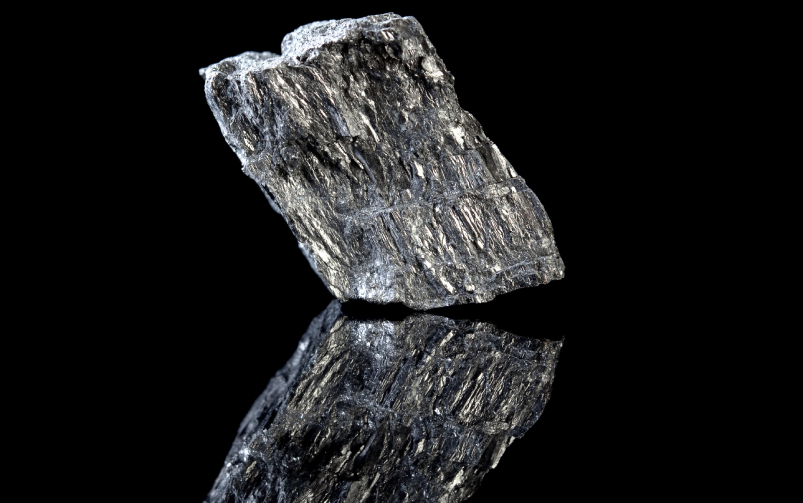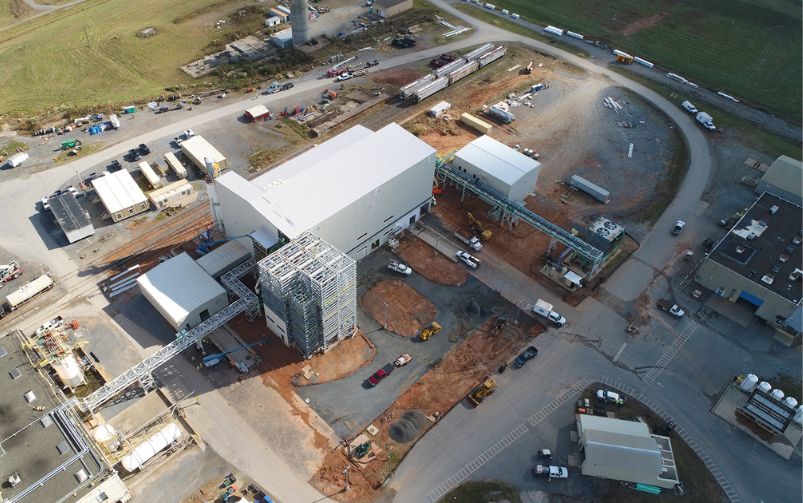At a press conference in Sudbury on April 11, it was announced that Ontario will lower diesel exposure limits in mines. Courtesy of USW Local 6500.
On April 11, 2023, Monte McNaughton, Ontario’s Minister of Labour, Immigration, Training and Skills Development, announced that the province was adopting stricter regulations for diesel engine exhaust (DEE) exposure in underground mines, reducing the occupational exposure limit (OEL) from 0.4 milligrams per cubic metre to 0.12 mg/m3 by Sept. 1.
“Miners have been the backbone of Ontario’s economy for generations, and we owe it to them and their families to do more to keep them safe,” McNaughton said in an April 11 press release. “These everyday heroes are critical to the future of our great province and I’m proud that our changes today will save lives.”
The 0.4 mg/m3 limit was established in Ontario in 1990. In 2012, the World Health Organization’s International Agency for Research on Cancer classified DEE as carcinogenic. Continued exposure to DEE has been linked to long-term, severe health effects such as lung cancer, bladder cancer, cardiovascular disease, asthma and more. According to the Occupational Cancer Research Centre (OCRC) and CAREX Canada, over 61,000 workers in the mining sector are potentially exposed to DEE across the country, so for Mike Parent, vice-president of health and safety services at Workplace Safety North (WSN), getting that limit lowered has been a long time coming.
Parent worked as an underground miner from 2002-2005, and said he wasn’t aware at the time of the health risks of diesel exhaust.
Related: An array of sensors and technologies is giving miners a virtual shield to protect them underground
“I didn’t know that diesel was cancer causing, and I worked around diesel equipment and sometimes the ventilation wasn’t as good as it should have been,” Parent said. “In hindsight, I don’t know what I’ve exposed myself to. Same with thousands of men and women in the mines.”
In 2013, while working as an occupational health and safety manager, Parent became aware that the World Health Organization had advised that diesel particulate matter was linked to cancer, and responded by reducing the mine employees’ exposure to DEE by 50 per cent from the OEL of 0.4 mg/m3 to 0.2 mg/m3. After joining WSN in 2015, Ontario formed the Occupational Disease Action Plan, which had a diesel sub-committee that Parent chaired to advocate for awareness and regulation change. But despite this, getting others to act was not always so simple.
“[Reducing the levels] was a lot of work, and it wasn’t readily received. Our management team believed, ‘Hey, if 0.4 is the law, that should be good enough to protect workers.’ But really, by the push of my young, progressive industrial hygienists, we went to half of that. I sat in an occupational wellness conference in the fall of 2016, and the presenter was sharing that even 0.4 milligrams, the permissible level in Ontario, was far too high, that it was known to cause cancer, and that WSIB (Workplace Safety and Insurance Board) was approving claims of lung cancer associated with diesel emission exposure,” Parent said. “But the government at the time, which was a Liberal government, just wouldn’t hear of it. So we pushed for more awareness, more education, better management of the equipment and better scrubbers and filters. It seemed like that’s all we could get accomplished.”
Fast forward to 2023, and the official provincial OEL has been lowered even further. The reason for this accomplishment is due to the efforts of the Diesel Particulate Project, a group made up of the United Steelworkers (USW) Local 6500, the Occupational Health Clinics for Ontario Workers (OHCOW) and the Centre for Research in Occupational Health and Safety (CROSH). Since 2019, the group has been working to negotiate with the provincial government to adopt a lower OEL and educate mine workers on the risks of exposure to DEE, and according to Nick Larochelle, president of USW Local 6500, the work is not finished.
“I think it’s a great start. A lot of work went into reducing the level from 0.4 down to 0.12 milligrams per cubic metre through the Mining Legislative Review Committee (MLRC),” Larochelle said. “There is a lot of supporting evidence that 0.02 milligrams per cubic metre is the best scientific recommendation by the OCRC and CAREX Canada. So, through our meeting with Mr. McNaughton, we had a verbal commitment to continue working at the MLRC to bring the levels from 0.12 down to the scientifically recommended level of 0.02.”
According to George Flagler, Laurentian University graduate student and CROSH member, getting the message out to the mineworkers about the dangers posed by the existing OEL was a large undertaking, and a massive part of the project’s success.
“We needed support from mineworkers, and we needed political support as well,” he said.
That work included determining the most effective ways to reach the workers, distributing surveys and designing educational materials. He said one of the most important events was a town hall session in December 2022 with representatives from OHCOW, WSIB and CROSH where workers were invited to relate their experiences and fill out exposure forms.
“We wanted to hear stories from the mine workers themselves,” Flagler said. “There’s still quite a stigma in the industry about reporting concerns about diesel particulate matter exposure, but we were able to go through that and hear stories about workers saying, ‘Look, I come out, and I blow black out of my nose.’ It’s still bad, even in well-ventilated mines.”
The future of the Diesel Particulate Project includes the publication of a report detailing how best to lower DEE underground and ensuring that mines adhere to the 0.12 milligram limit. According to Larochelle, USW will be working towards the establishment of a federal standard OEL across all provinces and, according to Flagler, the group will be keeping the pressure on the government and industry to reduce the DEE exposure regulations even further to 0.02 milligrams.
“There was a commitment to say that we’re going to continue to work on lowering it, but there was no specific timeline for that, and I think that can be a challenge, because we could get into where it’s on the agenda, but it keeps getting pushed off and there’s no more action. We don’t want that to happen,” Flagler said. “Part of our report being sent to the ministry and us continuing to keep active is that we’re not going away. And we want this to continue to be at the forefront until our mine workers are safe.”




